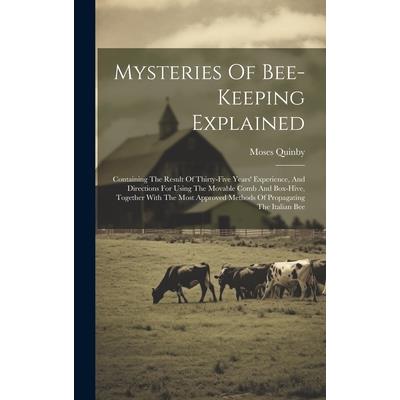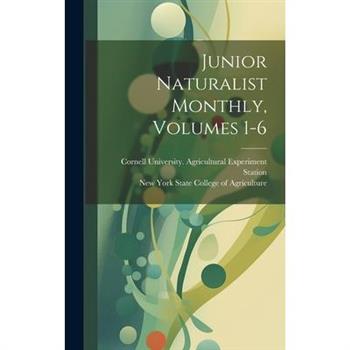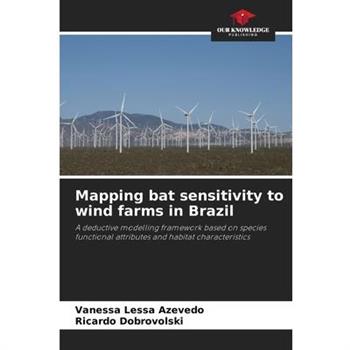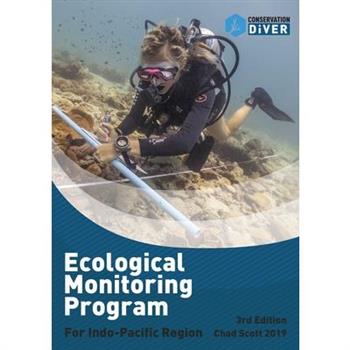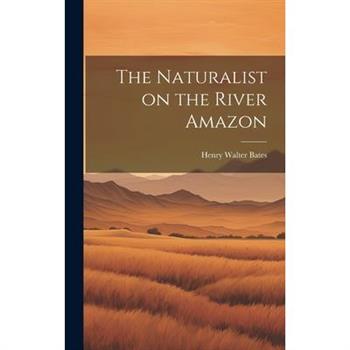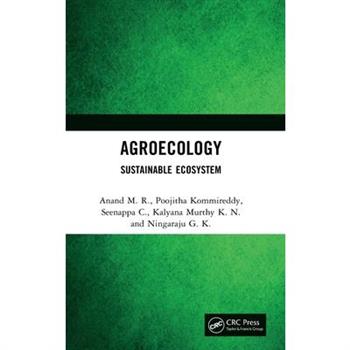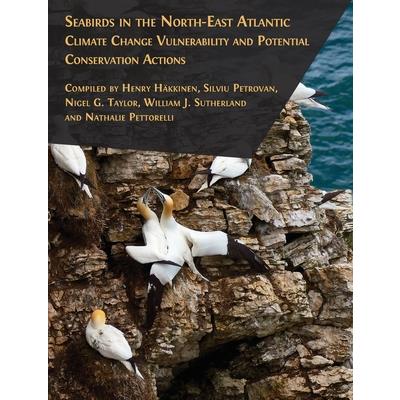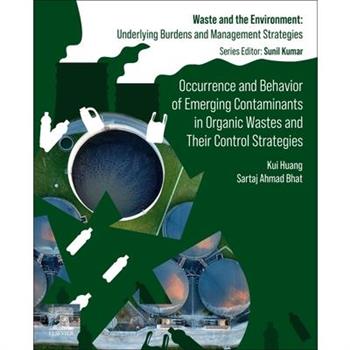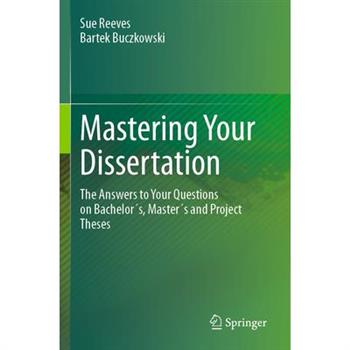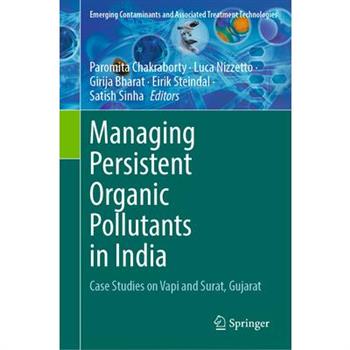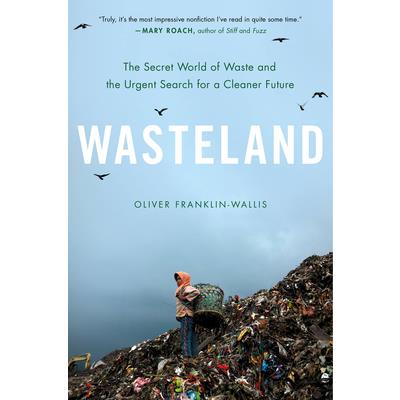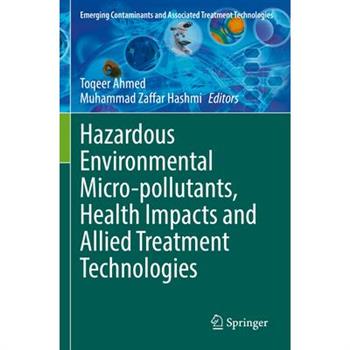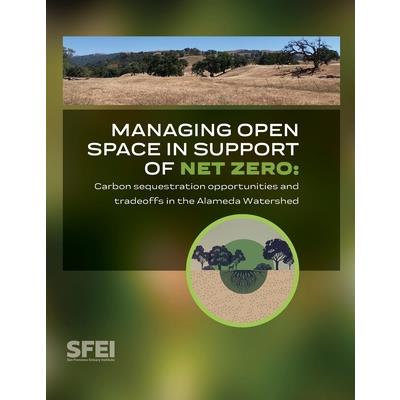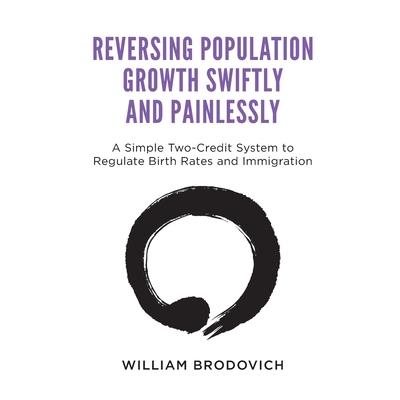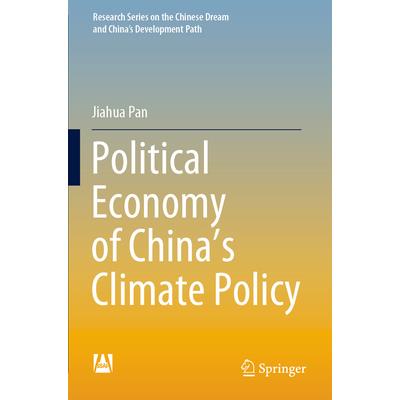Report On the Measurement of the Volume of Streams and the Flow of Water in the State of New York
This is a detailed report on the measurement of the volume of streams and the flow of water in the State of New York, written by Robert Elmer Horton. The report contains extensive data and analysis on the flow rates of various streams and rivers in the state, as well as recommendations for future monitoring and research. It is an important resource for hydrologists, environmental scientists, and policymakers concerned with water management and conservation.This work has been selected by scholars as being culturally important, and is part of the knowledge base of civilization as we know it.This work is in the "public domain in the United States of America, and possibly other nations. Within the United States, you may freely copy and distribute this work, as no entity (individual or corporate) has a copyright on the body of the work.Scholars believe, and we concur, that this work is important enough to be preserved, reproduced, and made generally available to the public. We appreciate your support of the preservation process, and thank you for being an important part of keeping this knowledge alive and relevant.
Generalized Linear Mixed Models with Applications in Agriculture and Biology
This open access book offers an introduction to mixed generalized linear models with applications to the biological sciences, basically approached from an applications perspective, without neglecting the rigor of the theory. For this reason, the theory that supports each of the studied methods is addressed and later - through examples - its application is illustrated. In addition, some of the assumptions and shortcomings of linear statistical models in general are also discussed. An alternative to analyse non-normal distributed response variables is the use of generalized linear models (GLM) to describe the response data with an exponential family distribution that perfectly fits the real response. Extending this idea to models with random effects allows the use of Generalized Linear Mixed Models (GLMMs). The use of these complex models was not computationally feasible until the recent past, when computational advances and improvements to statistical analysis programs allowed users to easily, quickly, and accurately apply GLMM to data sets. GLMMs have attracted considerable attention in recent years. The word "Generalized" refers to non-normal distributions for the response variable and the word "Mixed" refers to random effects, in addition to the fixed effects typical of analysis of variance (or regression). With the development of modern statistical packages such as Statistical Analysis System (SAS), R, ASReml, among others, a wide variety of statistical analyzes are available to a wider audience. However, to be able to handle and master more sophisticated models requires proper training and great responsibility on the part of the practitioner to understand how these advanced tools work. GMLM is an analysis methodology used in agriculture and biology that can accommodate complex correlation structures and types of response variables.
Generalized Linear Mixed Models with Applications in Agriculture and Biology
This open access book offers an introduction to mixed generalized linear models with applications to the biological sciences, basically approached from an applications perspective, without neglecting the rigor of the theory. For this reason, the theory that supports each of the studied methods is addressed and later - through examples - its application is illustrated. In addition, some of the assumptions and shortcomings of linear statistical models in general are also discussed. An alternative to analyse non-normal distributed response variables is the use of generalized linear models (GLM) to describe the response data with an exponential family distribution that perfectly fits the real response. Extending this idea to models with random effects allows the use of Generalized Linear Mixed Models (GLMMs). The use of these complex models was not computationally feasible until the recent past, when computational advances and improvements to statistical analysis programs allowed users to easily, quickly, and accurately apply GLMM to data sets. GLMMs have attracted considerable attention in recent years. The word "Generalized" refers to non-normal distributions for the response variable and the word "Mixed" refers to random effects, in addition to the fixed effects typical of analysis of variance (or regression). With the development of modern statistical packages such as Statistical Analysis System (SAS), R, ASReml, among others, a wide variety of statistical analyzes are available to a wider audience. However, to be able to handle and master more sophisticated models requires proper training and great responsibility on the part of the practitioner to understand how these advanced tools work. GMLM is an analysis methodology used in agriculture and biology that can accommodate complex correlation structures and types of response variables.
Managing Scotland’s Environment
Written in the light of international thinking on environment management, this third edition tackles the hottest debates of recent years - deer management, the post-Brexit future of farming, land reform, rewilding v. repeopling, windfarms and conflicts between game sport and conservation. Underlying all the practical and policy choices are intriguing ethical and philosophical considerations which the book addresses head on, including debates about the goals of conservation in a pervasively humanised world. This is an ideal text for those studying Scotland's environment at an undergraduate and graduate level, as well as for those already involved in - or interested in - managing land and nature in Scotland. Throughout, it is well illustrated with photographs and specially prepared maps and diagrams.
Managing Scotland’s Environment
Written in the light of international thinking on environment management, this third edition tackles the hottest debates of recent years - deer management, the post-Brexit future of farming, land reform, rewilding v. repeopling, windfarms and conflicts between game sport and conservation. Underlying all the practical and policy choices are intriguing ethical and philosophical considerations which the book addresses head on, including debates about the goals of conservation in a pervasively humanised world. This is an ideal text for those studying Scotland's environment at an undergraduate and graduate level, as well as for those already involved in - or interested in - managing land and nature in Scotland. Throughout, it is well illustrated with photographs and specially prepared maps and diagrams.
The Encyclopaedia of Municipal and Sanitary Engineering [electronic Resource]
This comprehensive reference work covers all aspects of municipal and sanitary engineering, from water supply and sewage treatment to road construction and waste management. With contributions from leading experts in the field, The Encyclopaedia of Municipal and Sanitary Engineering is an essential resource for anyone involved in urban planning and infrastructure management.This work has been selected by scholars as being culturally important, and is part of the knowledge base of civilization as we know it.This work is in the "public domain in the United States of America, and possibly other nations. Within the United States, you may freely copy and distribute this work, as no entity (individual or corporate) has a copyright on the body of the work.Scholars believe, and we concur, that this work is important enough to be preserved, reproduced, and made generally available to the public. We appreciate your support of the preservation process, and thank you for being an important part of keeping this knowledge alive and relevant.
Mysteries Of Bee-keeping Explained
Discover the secrets of bee-keeping with over three decades of experience from M. Quinby. This book offers valuable directions on using the movable comb and box-hive, as well as the most effective ways to propagate the Italian bee. This is a must-read for anyone interested in bee-keeping or looking to expand their knowledge on the subject.This work has been selected by scholars as being culturally important, and is part of the knowledge base of civilization as we know it.This work is in the "public domain in the United States of America, and possibly other nations. Within the United States, you may freely copy and distribute this work, as no entity (individual or corporate) has a copyright on the body of the work.Scholars believe, and we concur, that this work is important enough to be preserved, reproduced, and made generally available to the public. We appreciate your support of the preservation process, and thank you for being an important part of keeping this knowledge alive and relevant.
The Journal Of The Cincinnati Society Of Natural History; Volume 10
This publication is a collection of articles on natural history written by members of the Cincinnati Society of Natural History. It covers various topics, including zoology, botany, and geology, and provides valuable insights into the scientific research conducted in the Cincinnati region during the 19th century.This work has been selected by scholars as being culturally important, and is part of the knowledge base of civilization as we know it.This work is in the "public domain in the United States of America, and possibly other nations. Within the United States, you may freely copy and distribute this work, as no entity (individual or corporate) has a copyright on the body of the work.Scholars believe, and we concur, that this work is important enough to be preserved, reproduced, and made generally available to the public. We appreciate your support of the preservation process, and thank you for being an important part of keeping this knowledge alive and relevant.
Mapping bat sensitivity to wind farms in Brazil
The American Naturalist; Volume 10
The American Naturalist is a scientific journal that covers a wide range of disciplines related to ecology, evolution, and behavior. This collection features important articles from the journal, making it a must-read for anyone interested in the natural sciences.This work has been selected by scholars as being culturally important, and is part of the knowledge base of civilization as we know it.This work is in the "public domain in the United States of America, and possibly other nations. Within the United States, you may freely copy and distribute this work, as no entity (individual or corporate) has a copyright on the body of the work.Scholars believe, and we concur, that this work is important enough to be preserved, reproduced, and made generally available to the public. We appreciate your support of the preservation process, and thank you for being an important part of keeping this knowledge alive and relevant.
Sobbing Superpower
Delve into the world of extinct animals with this fascinating book. From dinosaurs to dodos, discover the incredible creatures that once roamed the earth and learn about what led to their eventual extinction. With vivid illustrations and engaging text, this book is a must-read for anyone interested in the natural world.This work has been selected by scholars as being culturally important, and is part of the knowledge base of civilization as we know it.This work is in the "public domain in the United States of America, and possibly other nations. Within the United States, you may freely copy and distribute this work, as no entity (individual or corporate) has a copyright on the body of the work.Scholars believe, and we concur, that this work is important enough to be preserved, reproduced, and made generally available to the public. We appreciate your support of the preservation process, and thank you for being an important part of keeping this knowledge alive and relevant.
The Spas of Belgium, Germany, Switzerland, France, and Italy
Originally published in 1855, this guidebook provides detailed descriptions of the major spas in Western Europe. Thomas More Madden offers insights into the therapeutic properties of these spas, with a focus on their potential benefits in treating diseases such as gout, rheumatism, and dyspepsia. This new edition features a comprehensive introduction by Anne Hardy, placing Madden's work in its historical and cultural context.This work has been selected by scholars as being culturally important, and is part of the knowledge base of civilization as we know it.This work is in the "public domain in the United States of America, and possibly other nations. Within the United States, you may freely copy and distribute this work, as no entity (individual or corporate) has a copyright on the body of the work.Scholars believe, and we concur, that this work is important enough to be preserved, reproduced, and made generally available to the public. We appreciate your support of the preservation process, and thank you for being an important part of keeping this knowledge alive and relevant.
The Novel After Theory
This seminal work on forest ecology and management examines the lodgepole pine forests of the American West and the natural processes that regulate their growth and regeneration. Written by pioneering ecologist Frederic E. N. Clements, this book remains a valuable resource for researchers and professionals interested in understanding the intricacies of forest ecosystems.This work has been selected by scholars as being culturally important, and is part of the knowledge base of civilization as we know it.This work is in the "public domain in the United States of America, and possibly other nations. Within the United States, you may freely copy and distribute this work, as no entity (individual or corporate) has a copyright on the body of the work.Scholars believe, and we concur, that this work is important enough to be preserved, reproduced, and made generally available to the public. We appreciate your support of the preservation process, and thank you for being an important part of keeping this knowledge alive and relevant.
An Index to the Museum Boltenianum
In this comprehensive index, Joachim Friedrich Bolten and William Healey Dall catalog the specimens and objects that comprise the Museum Boltenianum. This museum was founded by Bolten in the late 18th century and contains a vast collection of specimens from around the world. This index is a valuable resource for anyone interested in the natural sciences.This work has been selected by scholars as being culturally important, and is part of the knowledge base of civilization as we know it.This work is in the "public domain in the United States of America, and possibly other nations. Within the United States, you may freely copy and distribute this work, as no entity (individual or corporate) has a copyright on the body of the work.Scholars believe, and we concur, that this work is important enough to be preserved, reproduced, and made generally available to the public. We appreciate your support of the preservation process, and thank you for being an important part of keeping this knowledge alive and relevant.
The Ecological Monitoring Program, Indo Pacific
The Ecological Monitoring Program (Indo-Pacific Version), 3rd Edition, is a course that provides divers with profound insights into coral reef ecology. It aims to impart the requisite skills to conduct scientific monitoring surveys in coral reefs.This comprehensive guide is your passport to understanding the intricate tapestry of coral reef organisms, their interactions, and their integral role in the grand scheme of the ecosystem. While the knowledge encapsulated within is globally relevant, this edition casts a dedicated spotlight on the reefs of the Indo-Pacific. It is brimming with the most recent information regarding their health and status, making it a valuable resource in our collective efforts to safeguard these unique habitats.The third edition not only makes for a fascinating read for divers of all levels, but it also becomes indispensable for dive leaders operating in coral reef environments.This edition explores an array of intriguing topics, such as: Coral Reef Ecology and Coral Anatomy: Dive into the complexities of these vibrant ecosystems and the building blocks that form them.Reef Invertebrate Identification and Assessments: Master the art of identifying and evaluating these often overlooked reef residents.Coral Reef Fish ID and Monitoring: Enhance your understanding and ability to monitor these colorful inhabitants.Coral Identification and Health Assessments: Learn the nuances of different coral species and how to assess their health.Coral Taxonomy: Understand the classifications within the coral kingdom.Coral Diseases: Identify and understand the diseases that threaten our coral populations.Advanced Reef Monitoring Techniques: Equip yourself with cutting-edge methodologies for more efficient reef monitoring.Plus many more intriguing aspects of coral reef life.Engage with the marine world in a more meaningful way with this in-depth and practical guide. The knowledge you gain will not only enhance your diving experience but also contribute to the greater cause of reef conservation
The Naturalist on the River Amazon
Join renowned naturalist Henry Walter Bates on his journey through the Amazon river basin. With vivid descriptions of the flora and fauna, Bates shares his observations and insights about the natural world. This book is a must-read for anyone interested in the Amazon region or the history of naturalism.This work has been selected by scholars as being culturally important, and is part of the knowledge base of civilization as we know it.This work is in the "public domain in the United States of America, and possibly other nations. Within the United States, you may freely copy and distribute this work, as no entity (individual or corporate) has a copyright on the body of the work.Scholars believe, and we concur, that this work is important enough to be preserved, reproduced, and made generally available to the public. We appreciate your support of the preservation process, and thank you for being an important part of keeping this knowledge alive and relevant.
Agroecology
Agroecology literacy is 'the degree to which people have an objective and well-informed understanding of crop production with environmental issues.'The increased food grain production has also increased the unscientific and indiscriminate use of agrochemicals which has affected the soil health and degraded agroecosystem adversely and brought down the immunity of soil and the productivity of crops. In addition, it has resulted in the over-exploitation of soil, leading to nutrient imbalance. Moreover, the negative impact of chemical agriculture on the environment and human health has been reported and documented. Increased environmental awareness and health consciousness promoted scientists and planners to think about sustainable farming practices as an alternate way for healthy agriculture to protect the environment and human health. Eco-friendly methods or ecosystem services are one solution to manage this issue.This book intends to provide the core elements of a curriculum for teaching agroecology at colleges and universities.Print edition not for sale in India.
Pocket guide to weeds of Cambodia
This guide is designed to assist Cambodian agricultural advisers to accurately identify weeds in cropping situations so that recommendations for weed control can be made based on the principles of Integrated Weed Management (IWM). Weed species differ in their responses to management practices because they have different life cycles and nutrient requirements and different modes of reproduction. They also vary in their responses to cultivation and susceptibility to herbicides. It is therefore important for the adviser and farmer to be able to accurately identify different weed species and to understand their individual weaknesses. This Guide for identification of weeds in Cambodia has been produced for that purpose. Species are arranged in alphabetical order in the Guide according to family, genus and species. A plant family (e.g. Euphorbiaceae) contains a number of related plants, all of which have one or more features in common. Families are split into a number of genera (e.g. Euphorbia, Jatropha, Ricinus), with the plants in these generic groups having further common characteristics. Each of the genera (genus) comprise one or more species, each with its own distinguishing or specific name (e.g. Euphorbia heterophylla L., Jatropha gossypiifolia L., Ricinus communis (Moq.) Gomez). These names are distinct from each other and from those of every other plant species. The Guide also includes the Khmer name for the weed, if known. A brief description, using taxonomic terminology, based primarily on the Flora of China, is given for each species. The descriptions in this Guide focus on plant habit, inflorescence, seeds and habitats that the weeds are found in.
Seabirds in the North-East Atlantic
This book was produced by the Zoological Society of London and the University of Cambridge with two aims: to assess seabirds' vulnerability to climate change in the North-East Atlantic, and to identify potential conservation actions that could reduce this vulnerability. 'Seabirds in the North-East Atlantic' collates information from the scientific literature, non-governmental organisations' reports, conservation practitioner input and online databases into a single volume, and provides a reference manual to assist conservation planning. It is intended to be used by anyone who wishes to identify climate change threats to seabirds; to compare threats between different areas of the North-East Atlantic; to start a quantitative climate change vulnerability assessment for a local population; or to review options for conservation action in response to climate change.This book stems from research published in December 2022, but assessments may be updated based on feedback and newly available information. To check for updates to our assessments, please visit our website at: www.ZSL.org/seabird-guidelines.
On the Day I Died
This book was produced by the Zoological Society of London and the University of Cambridge with two aims: to assess seabirds' vulnerability to climate change in the North-East Atlantic, and to identify potential conservation actions that could reduce this vulnerability. 'Seabirds in the North-East Atlantic' collates information from the scientific literature, non-governmental organisations' reports, conservation practitioner input and online databases into a single volume, and provides a reference manual to assist conservation planning. It is intended to be used by anyone who wishes to identify climate change threats to seabirds; to compare threats between different areas of the North-East Atlantic; to start a quantitative climate change vulnerability assessment for a local population; or to review options for conservation action in response to climate change.This book stems from research published in December 2022, but assessments may be updated based on feedback and newly available information. To check for updates to our assessments, please visit our website at: www.ZSL.org/seabird-guidelines.
Occurrence and Behavior of Emerging Contaminants in Organic Wastes and Their Control Strategies
Occurrence and Behavior of Emerging Contaminants in Organic Wastes and Their Control Strategies provides updated information on the occurrence, monitoring, and behavior of emerging contaminants discharged into the environment from different anthropogenic activities as well as organic wastes management practices, which can be beneficial in classifying and broadly addressing the assessment, treatment, disposal, and management of organic wastes. This book covers the occurrences of nanoparticles, microplastics, antibiotic resistance genes, disinfection by-products, medical waste, pharmaceutical and personal care products, and other emerging contaminants discharged in different types of organic wastes. Researchers, scientists, graduate, and postgraduate students will find this book to be a timely contribution that will be useful in identifying and comprehensively addressing occurrence and behavior of emerging contaminants in organic wastes.
Localizing the Sdgs in African Cities
This volume brings together a unique set of interventions from a variety of contributors to bridge the gap between research and policy with a distinct focus on Africa, drawing on work conducted as part of multiple interconnected research projects and networks on the Sustainable Development Goals (SDGs) and global policy implementation in African cities. Through the framework of the SDGs, and in particular Goal 11, the book aims to contribute to generating new knowledge about approaches to SDG localization that are grounded in complex and diverse local contexts, needs and realities, integrated perspectives and collaborative research. The volume draws together contributions from urban experts from different professional and disciplinary backgrounds, ranging from the fields of governance, planning, data, sustainability, health and finance, to provide critical insight into the current dynamics, actors, blind spots, constraints and also good practices and opportunities for realizing the SDGs in Africa. Readers will gain detailed and informed insight into the African experience of SDG localization, monitoring and implementation based on multiple case studies, and will learn of the practices needed to accelerate action towards achieving the SDGs in urban contexts. This book will be of interest to researchers and planners focusing on SDGs implementation in Africa, as well as government organizations, development practitioners and students committed to long-term, inclusive sustainable and participatory development. This is an open access book.Chapters 1, 3, 6, 8, 11 and 14 are available open access under a Creative Commons Attribution 4.0 International License via link.springer.com.
Elemental
An ecologist explores how life itself shapes Earth using the elemental constituents we all share It is rare for life to change Earth, yet three organisms have profoundly transformed our planet over the long course of its history. Elemental reveals how microbes, plants, and people used the fundamental building blocks of life to alter the climate, and with it, the trajectory of life on Earth in the past, present, and future. Taking readers from the deep geologic past to our current era of human dominance, Stephen Porder focuses on five of life's essential elements--hydrogen, oxygen, carbon, nitrogen, and phosphorus. He describes how single-celled cyanobacteria and plants harnessed them to wildly proliferate across the oceans and the land, only to eventually precipitate environmental catastrophes. He then brings us to the present, and shows how these elements underpin the success of human civilization, and how their mismanagement threatens similarly catastrophic unintended consequences. But, Porder argues, if we can learn from our world-changing predecessors, we can construct a more sustainable future. Blending conversational storytelling with the latest science, Porder takes us deep into the Amazon, across fresh lava flows in Hawaii, and to the cornfields of the American Midwest to illuminate a potential path to sustainability, informed by the constraints imposed by life's essential elements and the four-billion-year history of life on Earth.
A Guide to Career Resilience
Mentors and sponsors are essential to career success, but these close relationships are not always free from trouble. This book shares advice and practical examples on how to survive and thrive throughout your career by differentiating between good and bad guidance you receive from mentors and sponsors. Real-life guidance is provided on how to manage troubled mentoring and sponsoring relationships at work.
Mastering Your Dissertation
This reader-friendly guide is specifically designed for any student who has ever had a question about theses as part of their university undergraduate degree course in a life- or health science-related subject. It covers the varied types of projects that exist, including experimental work, surveys, meta-analyses, audits and qualitative and quantitative studies - all in one place.Get support at planning, completing and writing of your research based thesis. By using examples and check lists, this book leads you through the entire process encompassing each chapter of the dissertation. Let the question and answer writing style encourage you and boost your confidence when embarking on what is probably your largest piece of work to date, solved in a step by step approach.The experienced authors have run an enormous number of web and face-to-face workshops to support students in life and health sciences and help them write their dissertations. It became clear that research theses are a considerable source of anxiety and that many essential questions need answering - this book is your solution.
Life On Earth
Explore the genesis of our extraordinary planet and the remarkable journey of life, from its humble origins to its flourishing diversity. Delve into the intricate tapestry of Earth's formation while unraveling the secrets to enhancing the holistic well-being of humanity.
Reduction of greenhouse gas emissions boiler plants
An important problem is the high concentration of pollutants, which mainly affects the health of workers, as well as the health of the nearby population. In addition, pollutants have a negative impact on the climate. Climate change due to greenhouse gas emissions has become a global concern. In this regard, carbon capture and sequestration technologies are recognized as critical to contain the global temperature rise within 1.5- 2 oCby 2050. The application of these technologies will reduce the amount ofCO2 emitted by businesses.
Managing Persistent Organic Pollutants in India
Persistent Organic Pollutants (POPs) are a class of chemicals that are persistent, bio accumulative and toxic (PBT), which are restricted for use under the Stockholm Convention. They adversely impact the environment, human and animal health. Most of the POPs are semi-volatile organic compounds (SVOCs) and known to have a long-range transport potential and are often deposited in colder climate and found in places away from the regions they are produced. POPs are usually hydrophobic (i.e., "water-hating") and lipophilic (i.e., "fat-loving") chemicals, due to which they bind to solids, particularly organic matter, and fatty tissues in both marine and terrestrial environments. As a result, POPs may move up the food chain. This book focuses on determining the sources, fate, analytical techniques of detecting POPs as well as their health impacts. It further dwells on the regulatory aspects, management of POPs, best environmental practices (BEPs), Indian and international case studies, gaps in understanding the regulatory aspects. A few key recommendations for the way forward form the concluding chapters of this book.
Effluent Dye Removal by Microwave-Assisted Activated Carbon
This book explores the potential of advanced microwave techniques, specifically microwave-assisted pyrolysis, for the production, adsorption, and regeneration of activated carbon (AC) as a promising solution to address wastewater pollution caused by dyes. The author begins with a chapter devoted to the environmental implications of water pollution and emphasizes the characteristics of dyes and various treatment techniques for their removal. The advantages and disadvantages of commercially available activated carbon are also discussed, along with the determinants for effective adsorption using high-quality activated carbon. Additionally, the chapter delves into the different types of adsorbents, including agricultural and industrial waste, as well as bioadsorbents such as microorganisms. In Chapter 2, readers will find the latest trends in using microwave techniques for the activation process. In this chapter, the author elucidates the characteristics and mechanism of microwave heating and compares it with conventional heating methods. The advantages of microwave techniques, such as improved activation procedures and the influence of different factors, are explored. Various modeling and optimization approaches for adsorption and different techniques for analyzing the surface chemistry of activated carbons are also discussed. Furthermore, the chapter showcases the applications of microwave-assisted activated carbon for dye removal. The book closes with a chapter devoted to the recycling and regeneration of spent activated carbon (SAC) using microwave techniques. In this chapter, the author examines the procedures for SAC regeneration through microwave-assisted pyrolysis and highlights the advantages over conventional heating methods. The applications of microwave-assisted activated carbon regeneration and other miscellaneous technologies utilizing microwave heating for AC production and SAC regeneration are also explored. Given its breadth, this book is a valuable resource for researchers, professionals, and policymakers in the field of environmental science and engineering.
What Is Veganism For?
Across the world, an increasing number of people are turning to veganism, changing not just their diets, but completely removing animal products from their lives. For some, this is prompted by concerns over animal ethics; for others, it's a response to the part played by animal agriculture in the climate crisis or an attempt to improve their own health. Catherine Oliver shows why the veganism movement has become a powerful social, political and environmental force, taking an honest look at how we live and eat. She discusses the health and environmental benefits of veganism, explores the practical and social impacts of the shift to eating plants, and explains why veganism is not just a diet, but a way of life.
Bayou-Diversity
Louisiana's bayous and their watersheds teem with cypress trees, alligators, crawfish, and many other life forms. From Bayou Tigre to Half Moon Bayou, these sluggish streams meander through lowlands, marshes, and even uplands to dominate the state's landscape. In Bayou-Diversity, conservationist Kelby Ouchley reveals the bayou's intricate web of flora and fauna.Through a collection of essays about Louisiana's natural history, Ouchley details an amazing array of plants and animals found in the Bayou State. Baldcypress, orchids, feral hogs, eels, black bears, bald eagles, and cottonmouth snakes live in the well over a hundred bayous of the region. Collectively, Ouchley's vignettes portray vibrant and complex habitats. But human interaction with the bayou and our role in its survival, Ouchley argues, will determine the future of these intricate ecosystems. Bayou-Diversity narrates the story of the bayou one flower, one creature at a time, in turn illustrating the bigger picture of this treasured and troubled Louisiana landscape.
Research Ethics for Scientists
Research Ethics for Scientists A fully updated textbook helping advanced students and young scientists navigate the ethical challenges that are common to scientific researchers in academia As the number of scientific journals, government regulations, and institutional guidelines continue to grow, research scientists are increasingly facing ethical dilemmas. Even seasoned and honest scientists can unintentionally commit research misconduct or fail to detect and address intentional misbehavior. Research Ethics for Scientists is an authoritative "how-to" guide that clearly outlines best practices in scientific research. Critically examining the key problems that arise in research management and practice, this real-world handbook helps students and young scientists conduct scientific research that adheres to the highest ethical standards. Accessible chapters, logically organized into functional themes and units, cover all the major areas that are crucial for sustained success in science: ideas, people, data, publications, and funding. The second edition offers new and updated content throughout, including discussions of recent innovations to detect and adjudicate research misconduct, vulnerabilities in research practices that were exposed by the COVID-19 pandemic, and new methods people are using to cheat the system and skew the peer review process. Entirely new case studies focus on harassment and bullying in training and mentorship, anti-science and pseudoscience, equality and equity issues, the fabrication of data, and more. This edition integrates gender, race, student training, and other important social issues throughout. Presents up-to-date coverage of growing issues such as the ethics of rushing to publish Discusses the use of text-similarity detecting software to reveal plagiarism and image analysis techniques for detecting data and image manipulation Features new material on current trends such as universal open access (OA) publishing, increased research metrics, new models for peer review, working for multiple employers, and "shadow labs" for individual scientists Includes access to a companion website with PowerPoint slides of case studies and figures Written by an experienced researcher and PhD mentor, Research Ethics for Scientists: A Companion for Students, Second Edition is an indispensable resource for graduate students, postdoctoral researchers, early-career professors, and scientists involved in teaching scientists-in-training.
Wasteland
NAMED A BEST BOOK OF THE YEAR 2023 BY THE NEW YORKER, THE GUARDIAN, and KIRKUS REVIEWS An award-winning investigative journalist takes a deep dive into the global waste crisis, exposing the hidden world that enables our modern economy--and finds out the dirty truth behind a simple question: what really happens to what we throw away? In Wasteland, journalist Oliver Franklin-Wallis takes us on a shocking journey inside the waste industry--the secretive multi-billion dollar world that underpins the modern economy, quietly profiting from what we leave behind. In India, he meets the waste-pickers on the front line of the plastic crisis. In the UK, he journeys down sewers to confront our oldest--and newest--waste crisis, and comes face-to-face with nuclear waste. In Ghana, he follows the after-life of our technology and explores the global export network that results in goodwill donations clogging African landfills. From an incinerator to an Oklahoma ghost-town, Franklin-Wallis travels in search of the people and companies that really handle waste--and on the way, meets the innovators and campaigners pushing for a cleaner and less wasteful future. With this mesmerizing, thought-provoking, and occasionally terrifying investigation, Oliver Franklin-Wallis tells a new story of humanity based on what we leave behind, and along the way, he shares a blueprint for building a healthier, more sustainable world--before we're all buried in trash.
User Needs by Systematic Elaboration (Use)
The design of a building can facilitate the process of use and promote the well-being of users if it meets their needs. Knowledge of user needs and processes of use is important for a good design. However, it is not self-evident what these user needs really are, how user needs and processes of use can be researched, and how that knowledge can be used in a design. This book introduces an integrated methodology for the analysis of user needs, programming and evaluation that answers these questions. The purpose is to improve the interaction between the users and their environment and to avoid failure costs by facilitating proper design decisions. The theoretical perspective and the conceptual framework originate from environmental psychology, more specifically P-E fit theory. The target group consists of those who are interested in creating environments for people (designers, users, real estate managers; students and scientific staff). Designers are a special audience for whom the bookcan be a guide to working for and with users. The theoretical perspective and the conceptual framework can also be relevant for scientific research into the interaction between users and buildings.
Zoo Studies
Zoos and aquariums are culturally and historically important places where families enjoy their leisure time and scientists study exotic animals. Many contain buildings of great architectural merit. Some people consider zoos little more than animal prisons, while others believe they play an important role in conservation and education. Zoos have been the subject of a vast number of academic studies, whose results are scattered throughout the literature. This interdisciplinary volume brings together research on animal behaviour, visitor studies, zoo history, human-animal relationships, veterinary medicine, welfare, education, enclosure design, reproduction, legislation, and zoo management conducted at around 200 institutions located throughout the world. The book is neither 'pro-' nor 'anti-' zoo and attempts to strike a balance between praising zoos for the good work they have done in the conservation of some species, while recognising that they face many challenges in making themselves relevant in the modern world.
Advanced Oxidation Processes in Dye-Containing Wastewater
Textile industry wastewater contains toxic dyes as well as heavy metals and many other persistent organic compounds which are difficult to biodegrade using conventional biological methods. Advanced Oxidation Processes (AOPs) are one of the best alternatives for the effective degradation of such compounds. This Volume 2 starts with homogeneous and heterogeneous Fenton processes and reviews the application and variables that affect the process. It then discusses plasma technology- an emerging method in terms of its chemistry, treatment set-up, limitations, etc. The positive performance of carbon tetrachloride in process intensification of dye degradation is presented. The other chapters include topics such as sonoenzymatic treatment processes, electroflocculation versus textile wastewater, combination of photocatalysis and membrane Separation, and enhancement of anaerobic digestion and photodegradation through adsorption.
The Bioeconomy System
This book is a concise overall view of the status quo of the bioeconomy and its future developments - in Germany and beyond. Numerous practitioners from business, science, civil society and politics show how the bioeconomy is addressing the global problems of the future. Based on renewable raw materials and energies, the bioeconomy is developing new products and processes with the aim of shaping a more ecologically and economically sustainable future. But can it succeed? What are its opportunities and limitations? Which framework conditions influence it? The book answers these questions with a systemic view of the bioeconomy and thus enables a quick orientation in this topic. This is additionally supported by numerous graphics. The book thus invites readers to help shape the future of the bioeconomy.
At Risk of Deprivation
This open access book examines how and why various forms of climate (im)mobilities can impact people's objective and subjective well-being. Worsening climate impacts are forcing subsistence farmers worldwide to decide between staying or leaving their homes. This mixed methods study analyzes cases of climate-related migration, displacement, relocation, and immobility in Peru's coastal, highland, and rainforest regions. The results reveal that numerous farmers experienced profound and often negative well-being impacts, regardless of whether they stayed or migrated. The higher the structural constraints, such as weak governance, and the more damaging the climate impacts were, the higher the risk of well-being declines. Additionally, the affected individuals often had limited agency and ability to mitigate losses. These findings challenge the notion of "migration as adaptation" and emphasize the importance of safeguarding the human rights and security of those affected while addressing loss and damage. Without significant investments in such efforts, climate impacts could sharply diminish the well-being of numerous subsistence farmers worldwide--irrespective of whether they stay or migrate.
Managing open space in support of net zero
Encompassing 39,000 acres in the East Bay, the Alameda Watershed is one of the largest public land holdings in the San Francisco Bay Area. The site of several water supply reservoirs, the watershed is managed by the San Francisco Public Utilities Commission (SFPUC) for both water resources protection as well as biodiversity conservation, fire risk reduction, and other goals. The landscape is characteristic of the region, with rugged topography and vegetation dominated by grasslands, shrublands, and oak woodland habitats, along with riparian forests and wetlands. Carbon sequestration in the watershed's ecosystems has received increasing attention as a potential nature-based strategy toward San Francisco's net zero GHG emissions goal. To support SFPUC managers in making informed carbon management decisions, this carbon assessment for the Alameda Watershed offers scientific guidance on the watershed's current and potential performance as a natural climate solution. Two main objectives framed this analysis: to quantify existing carbon stocks in the watershed, and to evaluate opportunities to enhance carbon sequestration in the watershed's vegetation and soil.This report provides basic information on the state of the watershed's carbon stocks and the science around carbon management so that SFPUC managers may make informed management decisions. This report consists of five chapters. Chapter 1 (this chapter) introduces the topic of carbon management on natural and working lands. This chapter includes a very brief primer on carbon cycle principles and terminology used throughout this report.Chapter 2 offers background for the reader on how the ecology and management history of the Alameda Watershed influence its carbon storage. Current carbon stocks, rates of CO2 uptake and greenhouse gas emissions, and the potential for future sequestration all depend on characteristics of the ecosystem-its climate, vegetation, and soils-and the history of human activities on the landscape.Chapter 3 presents watershed-wide estimates of current carbon storage. This chapter describes the modeling and data synthesis methods used to map carbon storage in vegetation and soils, and presents the findings with maps, graphs, and tables. This analysis provides context for evaluating future carbon management opportunities and quantifies the value of carbon storage that is currently provided by open space conservation in the watershed. Chapter 4 describes a set of potential strategies for managing carbon in the watershed. For each management approach, this chapter provides an estimate of its carbon sequestration potential and presents key considerations for its suitability in the watershed. Such considerations include potential co-benefits for other ecological functions, potential tradeoffs with other management goals, and uncertainty and risk in its long-term capacity to sequester and store carbon. Synthesizing findings from the previous chapters, Chapter 5 offers broad recommendations related to carbon management. This chapter does not prescribe specific actions, but rather highlights conclusions, discusses their implications, and identifies key questions and areas for future research.
Reversing Population Growth Swiftly and Painlessly
Population growth hastens the depletion of natural resources, degrades the environment, increases poverty and conflict, and debases the human spirit. This book offers an antidote. It prescribes a simple and practical credit-based system that can gradually reduce any population to an optimal size without imposing a limit on the number of children a couple can produce. It does this without requiring anyone to violate the moral precepts of any of the world's major faiths regarding birth control and abortion. And it shows how to use the same system to rationally regulate immigration.After presenting the plan, the author explores the demographic, social, environmental, and economic changes that would likely accompany population reduction, and proposes innovative solutions for some of our most pressing problems, including poverty.Anyone with an interest in the future of mankind and the conservation of the natural world will find this book informative, original, thought-provoking, and hopeful.




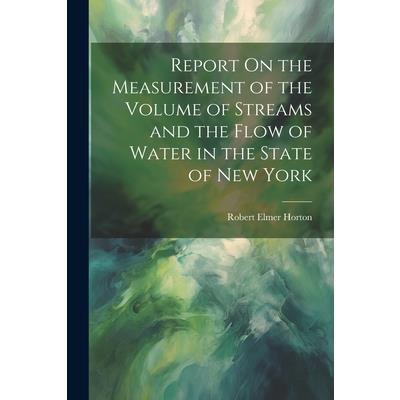

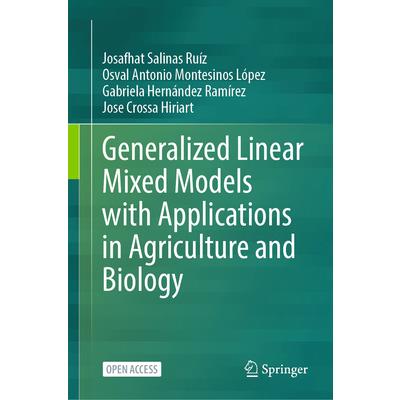

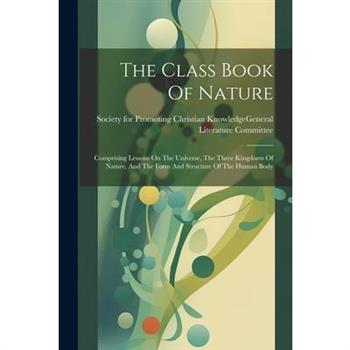


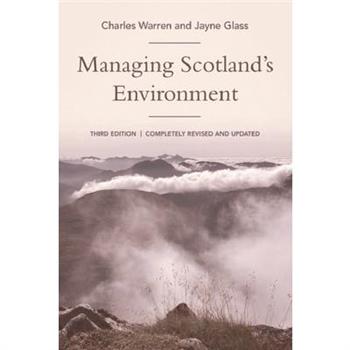
![The Encyclopaedia of Municipal and Sanitary Engineering [electronic Resource] The Encyclopaedia of Municipal and Sanitary Engineering [electronic Resource]](https://cdn.kingstone.com.tw/english/images/product/3656/9781020523656.jpg)
